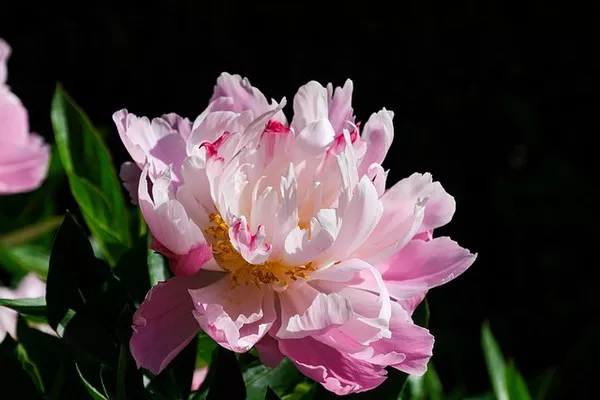Flowers, the delicate blooms that grace our gardens and events, have captivated human hearts for centuries. Beyond their aesthetic appeal, these natural wonders possess a profound language of their own, conveying sentiments, emotions, and messages that transcend cultural and linguistic barriers. In this article, we embark on a journey to unravel the intricate tapestry of flower symbolism, exploring the rich meanings behind these botanical wonders.
Historical Roots of Flower Symbolism
The language of flowers, known as floriography, has ancient roots dating back to civilizations such as the Egyptians, Greeks, and Romans. In the Victorian era, this floral code reached its zenith, becoming a popular means of communication in an era when expressing emotions openly was often discouraged. During this time, the publication of floral dictionaries further popularized the understanding of specific flower meanings.
The Universal Language of Blossoms
One of the remarkable aspects of flower symbolism is its universal nature. While specific flowers may hold distinct meanings in various cultures, certain blooms transcend geographical boundaries, carrying consistent symbolism. The rose, for instance, universally symbolizes love and passion, while the lotus represents purity and enlightenment in both Eastern and Western cultures.
Emotions Unveiled: Flowers in the Language of Love
Flowers have long been associated with matters of the heart, serving as messengers in the realm of romance. The red rose, arguably the most iconic of all flowers, symbolizes deep love and desire. However, nuances abound in the world of floral romance; the white lily signifies purity, the forget-me-not represents true love, and the tulip conveys a declaration of love.
Beyond romantic love, flowers also express a spectrum of emotions within familial and platonic relationships. The daisy, with its simplicity and innocence, embodies loyal love and friendship, while the chrysanthemum conveys respect and admiration.
The Poetry of Petals: Flowers in Art and Literature
Throughout history, artists and writers have drawn inspiration from the beauty and symbolism of flowers. From Vincent van Gogh’s vibrant Sunflowers to Shakespeare’s poetic references to the rose, flowers have been woven into the fabric of human expression. Exploring these artistic manifestations allows us to delve deeper into the emotional and cultural significance attached to various blooms.
Floral Customs and Traditions Around the World
Flowers play a pivotal role in cultural customs and traditions globally. In Japan, the art of Ikebana focuses on the mindful arrangement of flowers to create harmony and balance. In Mexico, the marigold holds a sacred place during the Day of the Dead, symbolizing the fragility of life. Understanding these diverse customs provides insight into the unique ways different societies have integrated flowers into their cultural narratives.
Healing Blooms: Flowers in Therapeutic Practices
Beyond their symbolic meanings, flowers have been recognized for their therapeutic properties. The practice of using flowers for medicinal and emotional healing, known as floral therapy, is gaining popularity. Different blooms are believed to have specific healing energies, contributing to emotional well-being and stress reduction.
The Dark Side of Blossoms: Flowers in Funerary Symbolism
While flowers are often associated with joyous occasions, they also play a significant role in moments of grief and remembrance. Funeral flowers carry unique symbolism, with lilies representing the restored innocence of the departed and chrysanthemums symbolizing death in many cultures. Exploring the darker side of flower symbolism provides a holistic understanding of their role in the cycle of life.
Cultivating Meaning: Choosing Flowers with Intention
As we navigate through life’s milestones, the choice of flowers becomes an intentional act, conveying sentiments that words may fail to express. Whether selecting blooms for a wedding, celebrating an achievement, or offering condolences, understanding the language of flowers allows individuals to infuse deeper meaning into their gestures.
The Ever-Evolving Floral Lexicon
In the contemporary world, the language of flowers continues to evolve. Social media platforms and online communication have given rise to new ways of expressing sentiments through virtual bouquets and digital floral arrangements. Exploring these modern expressions of floral symbolism sheds light on how technology intersects with age-old traditions.
Cultures in Bloom: A Global Tapestry of Flower Symbolism
The beauty of flower symbolism lies in its ability to transcend cultural boundaries while embracing cultural diversity. By examining how different cultures assign meanings to specific flowers, we gain a nuanced understanding of the universal and culturally specific aspects of floral language.
Conclusion
In the delicate petals of flowers, a rich tapestry of meanings unfolds. From ancient civilizations to contemporary expressions, the language of flowers remains an ever-evolving and powerful form of communication. As we navigate the intricate landscape of floral symbolism, we discover that each bloom is a vessel of emotion, history, and culture, inviting us to pause and appreciate the profound language encapsulated in nature’s most exquisite creations.


